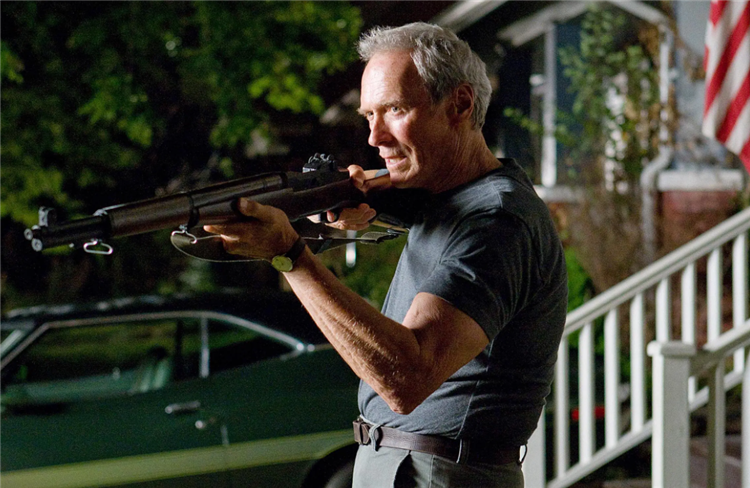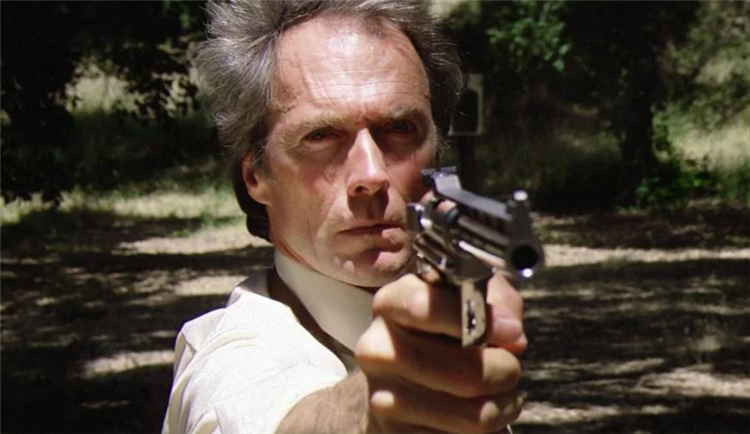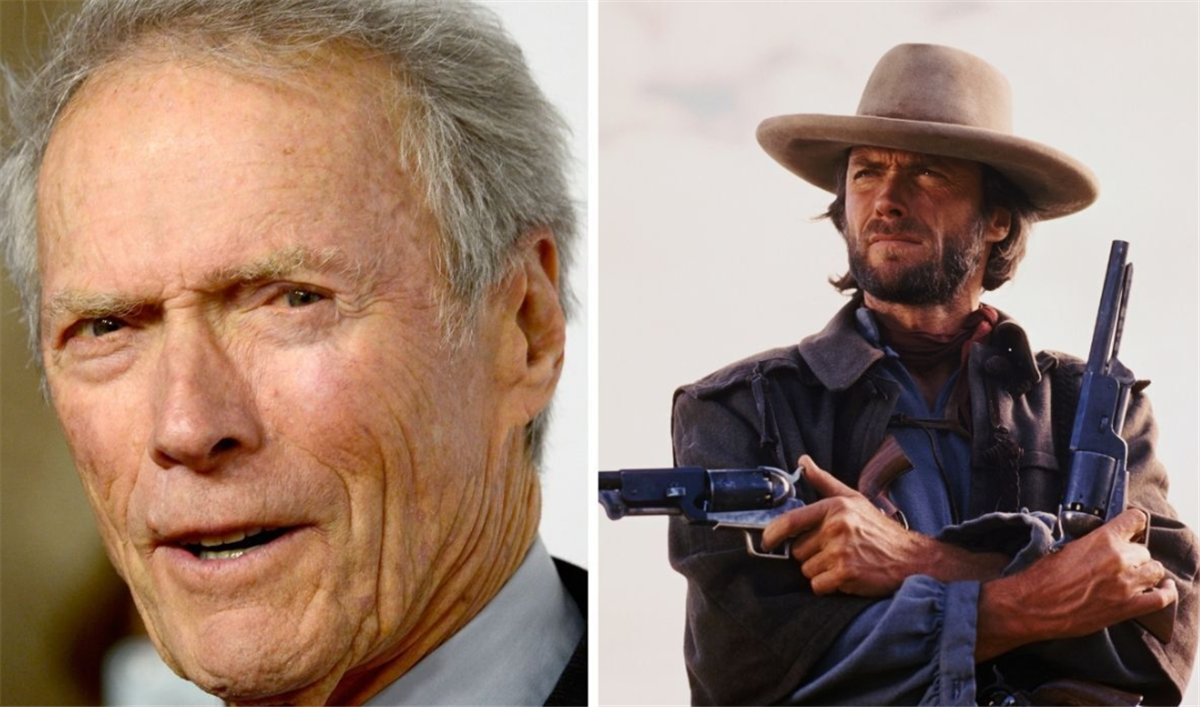The legend of Clint Eastwood seems to grow by the day as he approaches his 93rd birthday. An icon of the big screen dating all the way back to the late 60s, the actor/director has left his mark on many things within the film industry. He started out as the scowling gunslinger in the spaghetti westerns of Sergio Leone before making the short trip behind the camera beginning in 1971 when he directed the acclaimed Play Misty for Me. His star only continued to rise as he redefined the hard-boiled, rugged antihero detective in his epic Dirty Harry movies.
On top of that, he’s so damned impactful, that he has even influenced real-world economic trends because of the guns he has used in his films. Most notably, the array of firearms that he has holstered as Inspector Harry Callahan in the five-film series that began with Dirty Harry in 1971 and concluded with The Dead Pool in 1988. In these films, Callahan’s choice of weapon caused a surge in gun sales nationwide after he brandished them such confidence and prowess that average Joes everywhere dreamed of being as dirty as Harry Callahan. His gun-wielding exploits were often accompanied by a trademark quip like, “Go ahead! Make My Day.” and “Do I feel lucky? Well do you, punk?” The four movies that can be directly attributed to an increase and even the reproduction of a no longer manufactured piece were Dirty Harry, Magnum Force, The Enforcer, and Sudden Impact.
What Gun Does Eastwood Use in ‘Dirty Harry’?
The same year that Eastwood made his directorial debut, he also introduced the movie-going public to the scowling detective Harry Callahan who doesn’t necessarily play by the book when it comes to collaring his man. His devil-may-care, cavalier attitude quickly earned him the nickname “Dirty Harry.” When Clint squinted his eyes and furrowed his legendary eyebrows, you absolutely knew that someone was either about to get chewed out or shot dead. In the first Dirty Harry film, his preferred firearm was hardly a standard police issue. No, Harry needs something a little bigger and badder, befitting his larger-than-life machismo. So he went with the imposing Smith & Wesson Model 29 six-point-five inch barreled 44 Magnum sidearm. The sheer power of the weapon made him the kind of cop you didn’t want any part of and the public was so taken with the gun itself and the man behind it that sales of the Smith & Wesson 44 actually saw a dramatic increase in gun stores across the country.
‘Dirty Harry’ Made Sales of the Model 29 44 Skyrocket

Before the film debuted in 1971 the Model 29 44 drew interest mainly from a small group of target shooters, hunters, and cops and was on the brink of being discontinued. It was written for the film as a firearm with only a 4-inch barrel. But producers later decided that the shorter pistol didn’t have the same “stage presence” as the longer model, and was also difficult to find back in the day. After Dirty Harry Callahan wielded it in the film, people were coming out of the woodwork to get their hands on the cannon for a gun. Most gun sellers were quickly running out of stock as they flew off the shelf. Model 29s were selling for as much as three times their suggested retail price of $194 when they could be found. The pistol became such a favorite among gun owners that Smith & Wesson later discontinued the model only to bring it back under a rebranded, upgraded line called “Classics,” and have continued to update the weapon over the years since its inception.
The Sequel ‘Magnum Force’ Highlighted the 44. Magnum Gun
The popularity of the original Dirty Harry led directly to the title of the sequel made two years later, Magnum Force. The use of the word “magnum” was in direct response to the enormous splash that Eastwood made with the same weapon before. Demand continued when, in Magnum Force, Eastwood repeats his “This is a 44. Magnum, the most powerful handgun in the world” monologue while showcasing the pistol for a full two minutes during the film’s opening credits, as he goes on to cock, aim and fire the suddenly world-famous .44 at the audience. This may well have been the moment that we knew that the actor was on the verge of becoming Hollywood royalty. Only a select few have the right combination of charisma and gravitas to bust down the fourth wall in a film (without even showing their face) and have it be the most memorable and visceral moment in a very good movie. Magnum Force also drew more attention to the Colt Python when Callahan switches weapons for a target shooting exhibition which is also one of the most memorable scenes from the film.
Eastwood’s Weapon in ‘Sudden Impact’ Makes a Comeback, Too

In the fourth installment of the franchise, Sudden Impact, after being attacked by a group of assassins, Eastwood’s Callahan decides to switch out the Model 29, which was the most powerful handgun in the world, for a similarly menacing AMC Auto Mag Ltd Model 180 chambered in .44 AMP with an 8.5″ barrel. First developed by Harry Sanford in 1958, after Harry pulls the silver-barreled behemoth in the 1983 film, he brought with it a revival of the once-dormant pistol in real life. In fact, if you research the Auto Mag .44, you will almost always see it referenced as “the gun made famous by Dirty Harry in Sudden Impact.” When the company approached Eastwood with the daunting pistol, he made the decision that it was the gun he wanted to use for the film and essentially gave the gun new life.
Sanford had been tinkering around with the model for years, but when Eastwood used the gun in the film, there was renewed interest in the no longer-produced model and the demand for the weapon increased to the point that it was reintroduced in the 80s, and continues to sell to this day. In an interview with Guns.com, gun manufacturer and enthusiast Larry Grossman comments on how it became so popular that they had to begin updating it over the years to meet the demand from gun owners. Grossman has devoted almost 50 years to the development of the Auto Mag and, “is extremely excited to see the popularity of it and how many people love this gun. I’m glad it’s back.”
The “Ghost Gun” From ‘In the Line of Fire’
In the 1993 film In the Line of Fire, Eastwood plays a hardened Secret Security Agent on the detail for the President of the United States and must thwart an attempt on the Commander in Chief’s life from a demented villain. John Malkovich plays psychopath Mitch Leary who is a disgruntled former CIA operative hell-bent on besting Frank Horrigan (Eastwood) and the POTUS detail to carry out an assassination. Throughout the film, Leary is in the process of building a wooden/plastic composite gun from scratch that is undetectable by scanners and untraceable by serial numbers. It’s typically made using unfinished frames, the piece of the firearm that contains the operating parts of the firing mechanism, which are the parts of a gun regulated under federal law. Before the film, this type of homemade gun was known as just that — a “homemade” gun. It was the first time that this particular type of weapon was featured as a motif for a film and has since taken on the much more well-known moniker of a “ghost gun.” It really begs the question: is there any part of the handheld sidearm that Eastwood hasn’t influenced in some way? From bringing models back from the dead to influencing weaponry vernacular, the action icon has always shot straight from the hip.
